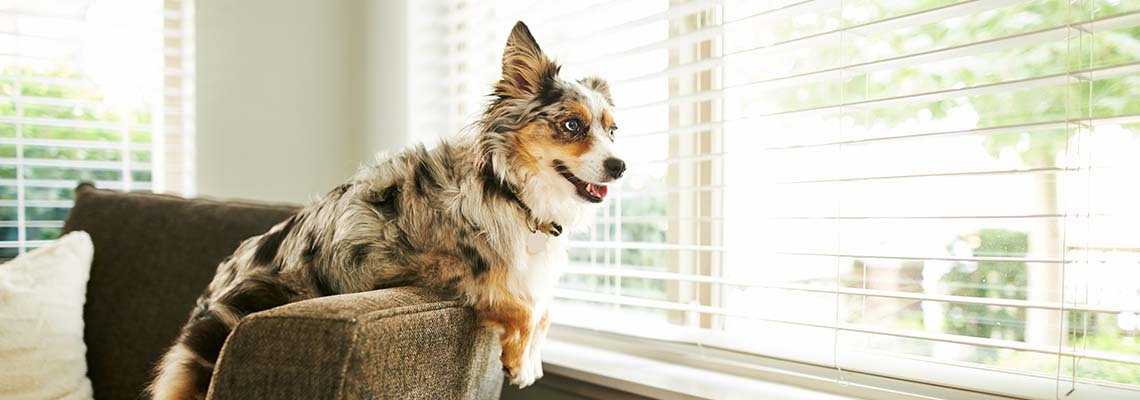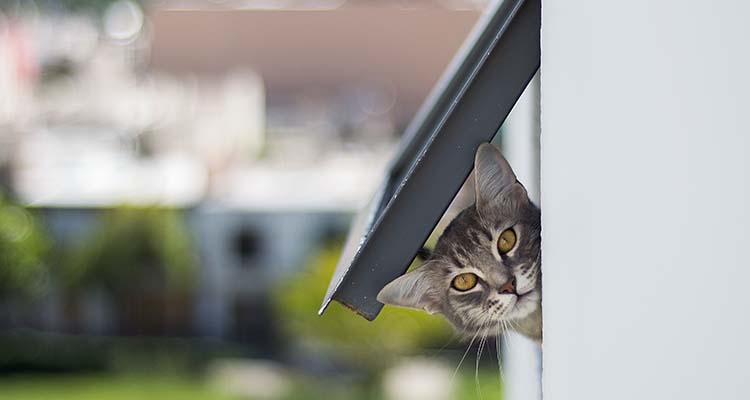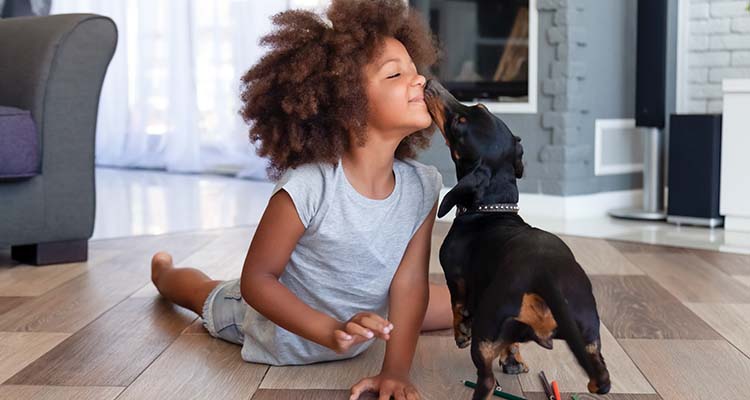
If you’re a pet owner, you may feel like having a pet can complicate the process of finding a security system that fits all of your needs. You want to make sure that your household is secure while also keeping your pets in mind, knowing that animals may unwittingly set off a motion sensor or raise unnecessary alarm bells meant to keep your home safe.
Animals are our furry best friends and they’re a part of the family, which means that the best home alarm system will make sure that your four-legged pals are safe, as well. When shopping for a security system for a home with pets, you likely have questions about which options will give you peace of mind, without the added worry of Fido or Fluffy accidentally setting off an alarm.

Can You Have A Security System With A Cat Or A Dog?
Yes! Of course you can. In order to have a safe, secure home with pets, there are certain precautions to take when installing a home security system:
- Keep sensors at adult height, around 5 feet above the ground.
- Keep sensors aimed at access points, rather than stairs or your pet’s favorite spots.
- Take into account the combined weight of your pets when using heat sensors.
- Consider installing pet barriers for secure rooms with motion sensors.
- Take your pets’ habits into account when positioning sensors.
Your pets may have quirky habits, such as climbing drapes or hiding in certain corners. Keep these daily habits in mind when installing your sensors. If you know your dog or cat has a tendency to curl up in a certain chair, avoid pointing sensors toward that area.
The most important areas for home security tend to be access points. Make sure that your sensors are focused on the most vulnerable access points, such as doors and floor-level windows. Keep these sensors high above the ground where pets might set them off. This will help to avoid unnecessary false alarms.

Can You Have An Alarm System With A Doggie Door?
Yes! Doggie doors are perfect for allowing your dog free reign to access the backyard, but it’s hard not to see the potential vulnerability in the defenses of your house, as it may seem inviting to unwanted intruders or critters in the neighborhood. So, what’s the solution?
Here are some tips for making your doggie door more secure:
- Make sure you have an appropriately-sized door for your dog – the smaller the better.
- Invest in a more secure doggie door cover, preferably one with a lock and key. Or, look to automated doggie-doors and cat-doors as another option.
- Consider an automatic pet door activated by a chip or key attached to your pet’s collar.
- Install your pet door in a discreet location, away from public view.
- Place a “Beware of Dog” sign in your window or on your property to serve as a deterrent to would-be burglars.
These may seem like very simple steps, but the fact is that intruders are looking for an easy target. Even a simple sign posting a warning that you have a dog — whether or not your dog is intimidating — is enough for an intruder to think twice.

How To Keep Your Dog Or Cat From Setting Off A False Alarm
A pet setting off a false alarm can have some serious, unintended consequences. Triggering a monitored security system means that law enforcement officers may be called and emergency services are activated. It’s difficult to call off a false alarm, and you may end up being charged a penalty. If it happens too frequently, you may even lose police privileges, putting your home at risk in the event of a true emergency.
In order to avoid your pet setting off false alarms, here are some precautions to take:
- Choose a high-quality, pet-friendly motion sensor.
- Plan around your pets’ habits – avoid pointing sensors in their favorite areas.
- Install motion sensors at 5 feet or higher, to avoid animal movements.
- Place the motion sensor upside down, towards the ceiling.
- Install a security camera to check on your pets’ movements.
- Don’t point sensors at windows, as this can trigger false alarms.
- Avoid pointing sensors at heaters, as these emit high infrared energy.
Pointing the motion sensors upwards means that the sensors are more likely to detect humans while ignoring the movement of your pets. Having a security camera available allows you to check on your pets’ movements and ensure that any motions detected are normal before sending any alarm bells ringing.
What Are Pet-Immune Motion Sensors?
Pet-immune motion sensors are designed to detect the size and weight of your pet, as well as disregard motion activated by your pet. These systems use passive, infrared motion detector technology, which is designed to monitor changes in heat in designated areas.
With traditional motion detectors, any motion — from a pet or otherwise — would be enough to trigger a false alarm. With pet-immune motion sensors, movement detected by your pet, usually based on the weight of the animal, or based on the number of animals in the household, will be ignored, thus avoiding a false alarm. Pet-immune motion sensors are often the best home security option for a home with cats and dogs.

Protect Your Home And Pets
An essential part of protecting your home is protecting your loved ones, and that includes your beloved pets. Take your dogs and cats into consideration when installing your home security system, plan ahead to avoid false alarms, and you can sleep soundly knowing that you and your four-legged buddies are safe and secure. Learn more about Protect Your Home’s pet-friendly home security solutions and find the best home security system for you and your pets!
